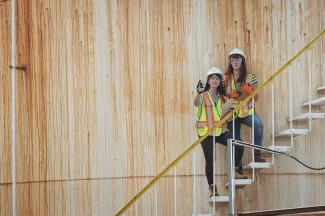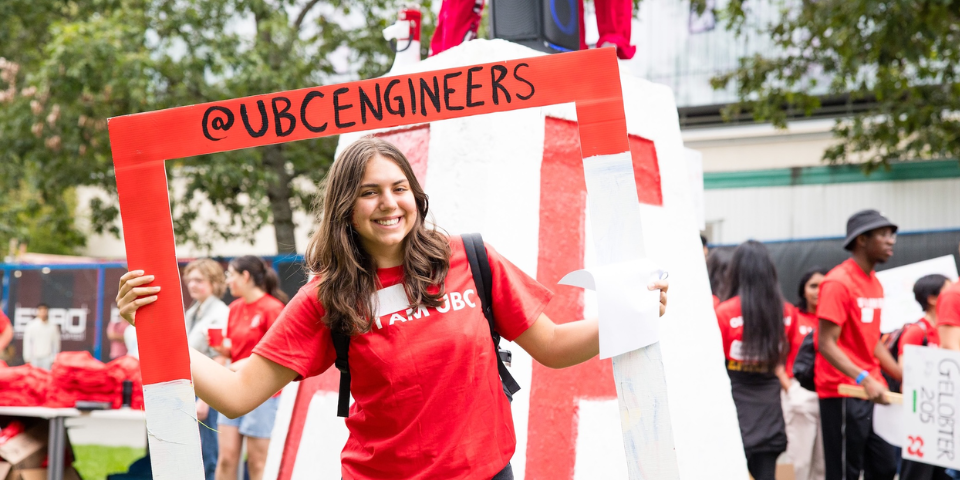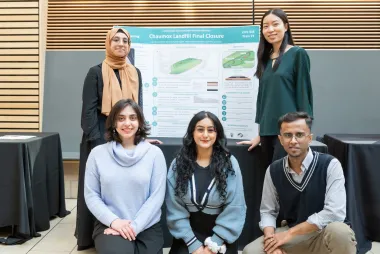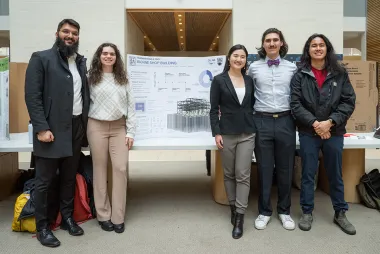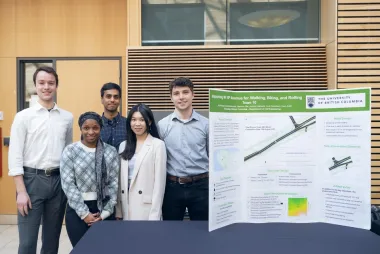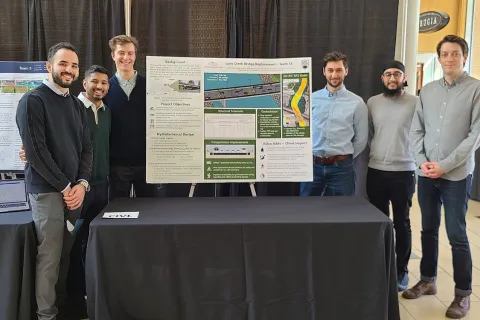
Avtar Panesar, Angus Pattison, Pasha Shobeiri, Dilisan Sunthareswaran, Maxime Therrien, Maciej Wysocki
- Community Partner: Northwest Hydraulic Consultants Ltd. and City of North Vancouver
- Degree:
- Bachelor of Applied Science
- Program:
- Campus: Vancouver
Our project
The Lynn Creek bridge is located on the Main Street / Cotton Road corridor in North Vancouver, which is a major arterial connection to Highway 1 and is currently a pinch point for active transportation modes and transit. This bridge replacement project will improve bicycle and pedestrian facilities, enhance connections to the adjacent Lynnmouth Park trails, and increase transit reliability via the addition of priority lanes. Another primary objective is increasing the structure’s resilience to flooding, sea level rise, and earthquakes. Disruptions during construction will aim to be minimized, ensuring two lanes of traffic always remain operational. Surrounding ecosystems and the ability for fish passage along the creek will be maintained or enhanced.

Our inspiration
Our group members are interested in a wide range of disciplines within Civil Engineering, including structural, transportation, hydrotechnical, and construction management. Of the capstone projects offered this year, we found this one best encompassed our interests and allowed us to practice multi-disciplinary collaboration similar to what we will experience in our professional careers. The Lynn Creek bridge replacement also involved many constraints and challenges that kept us engaged throughout the project.
When looking at the various possible projects, we found this one could encompass all our desired specialties, allowing us to collaborate on various subjects we wanted to delve deeper into.
Our biggest challenge
You can never have enough data! The creation of our 2D hydraulic model in HEC-RAS was a major part of the project, enabling us to run simulations and estimate key parameters, including water surface elevations and channel velocities during storm events. This was particularly difficult given available data sources and took many iterations to accurately reflect real-world conditions. Other aspects also had unique challenges that required creative thinking over time, including very tight property constraints impeding changes to the road cross-section and short time windows for in-stream construction due to high water in the winter and spring and fish spawning season towards the end of the summer.
What excited us most
The chance to combine our collective years of civil engineering classes across various disciplines into one project was a great chance to learn the complexities of real-world engineering projects. While previous class projects typically focused on one discipline at a time, having to balance the needs of various design parameters simultaneously was a new challenge we were all keen to take on. This bridge replacement also tackled both climate change mitigation (via the promotion of active transportation and transit use to reduce emissions and congestion) and climate change adaptation (by increasing resilience to sea level rise and flooding) which was very exciting and timely given the increasing number of projects tackling these aspects in years to come.
Most interesting/surprising thing we learned
Our team gained a new appreciation for the complexity of designing hydraulic structures to suit various fish species as they navigate upstream. This intersection of engineering and biology is fascinating and includes the characterization of fish species’ swimming abilities into different speeds and lengths of time (similar to walking, jogging, or sprinting for humans). As with most engineering projects, it’s amazing to see the thinking that goes on behind the scenes with aspects such as these to make a project successful!
Our project’s future
The City of North Vancouver has engaged a team of consultants to undertake the conceptual design of the bridge replacement at this stage. Going forward, the project team will undertake a very similar process to our capstone project, albeit with a longer timespan, including community engagement, preliminary design, and detailed design phases before proceeding to construction. We look forward to following the project’s progress and to seeing the engineering solutions to its many challenges in the years to come!

